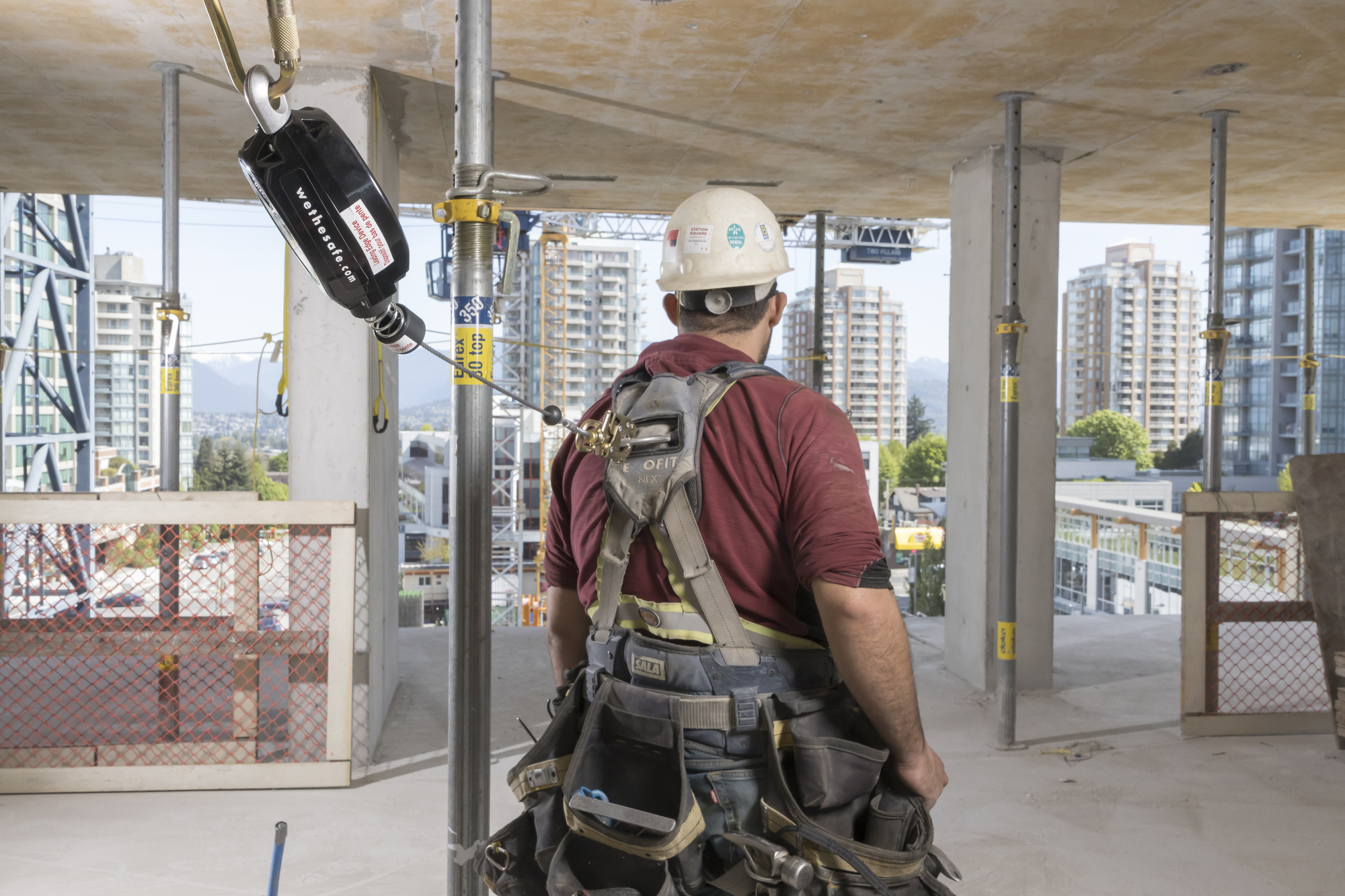OHS specialist Glenn Russell recalls how seeing a worker’s serious, life-changing injury inspired his motivation to raise awareness of fall protection.

Photo credit: © WorkSafeBC (Workers’ Compensation Board of B.C.), used with permission
A worker on a steep slope roof fell and fractured his leg when his fall protection equipment failed. The vertical lifeline was old and it broke, according to the summary of a recent incident reported to WorkSafeBC.
To find out more about inspecting fall protection systems. I spoke with Glenn Russell. Glenn is an occupational health and safety specialist with WorkSafeBC who’s visiting construction sites around B.C. He and his team are providing consultation and education services as part of the Construction Planned Inspectional Initiative.
“Falls from heights are one of the leading causes of injury for workers in construction,” Glenn says. “The obligation to use fall protection is a really large topic when we are talking with employers. It’s discussed regularly when we’re on site.”
Workers and employers need to follow safety instructions in all equipment’s user manuals. They also need to meet the requirements of Part 11, Fall Protection, of the Occupational Health and Safety Regulation.
Section 11.9 states:
- Equipment used in a fall protection system must be
- inspected by a qualified person before use on each work shift
- kept free from substances and conditions that could contribute to its deterioration, and
- maintained in good working order.
Something you never forget
Before coming to WorkSafeBC, Glenn worked in the construction industry. He operated equipment and did some carpentry, then became a first aid attendant, and eventually a construction safety officer. He said he felt strongly about fall protection because he had “seen some scary stuff” during his career. I asked him for examples, and he told me what happened the very first time he attended an incident to provide first aid.
“A worker had fallen through a floor opening,” Glenn said. “He was a new and young worker. He had multiple fractures and there was blood all over. It was just awful.”
Over a dozen years later, Glenn says: “I still remember the incident to this day. He was eventually okay, but I didn’t see him back again on the site. He was lucky to be alive.”
Motivation for promoting workplace safety
After that, Glenn turned into “Mr. Fall Protection.” He says: “You don’t want to see someone else go through that.”
“Every site I went to, the first thing I did was go to the very top of the site and figure out all the workers who were working at elevation,” Glenn says. “I was making sure their fall protection systems were adequate and used properly, and we had discussions about how to properly use a rope grab system and make sure that you didn’t have too much length in your line.”
I asked Glenn why he shifted his career into occupational health and safety.
“A roommate from a long time ago was fatally injured on a construction site, and I was going to school, taking something else. I ended up switching over to occupational health and safety as a result,” Glenn says. “It’s always motivated me to do my best to try and spread the word.”
You too can help to spread the word, by sharing this post.


